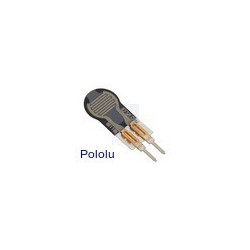Store address and hours
location_on 4131 Fraser St. Vancouver BC Get Directions
phone 604-875-1993 Call us
access_time Hours
| Monday - Friday | 9AM - 5:30PM |
| Saturday - Sunday & Holidays | Closed |
| See Holiday Hours | |

-
 close
close -
CATEGORIES
-
-
-
-
-
-
-
-
-
-
-
-
-
Featured Item
-
-
-
-
-
-
-
more electrical devices
More electrical devices -
more electrical devices
More electrical devices
-
-
more electrical devices
More electrical devices -
more electrical devices
More electrical devices
-
-
Featured Items
-
more electrical devices
More electrical devices
-
-
-
-
-
-
-
-
Featured Item
-
-
-
-
-
-
-
Featured Items
-
-
-
-
-
-
-
-
Featured Items
-
-
-
Featured Items
-
-
-
-
-
-
-
-
-
-
-
Featured Items
-
-
-
-
-
-
-
-
-
Featured Items
-
-
-
-
-
-
featured
-
-
-
Featured Items
-
-
-
-
-
-
-
Featured Items
-
-
-
-
-
Featured Items
-
-
-
-
Featured Products
-
-
-
More Filaments
More Filaments
-
-
-
-
more electrical devices
More electrical devices
-
-
more electrical devices
More electrical devices
-
-
Electrical Devices
-
-
-
more electrical devices
More electrical devices
-
-
-
-
-
-
-
Featured Products
-
-
-
Featured Products
-
-
-
-
BRANDS
-
-
-
-
Brands/Manufacturers
-
-
Manufacturer 3
-
-
- PROJECTS
-
COMMUNITY
-
- SALE Sale
FORCE SENSING RESISTOR 0.6" DIAMETER CIRCLE
Description
Overview
This force-sensing resistor (FSR) from Interlink Electronics is a passive component that acts as a variable resistor, with resistance decreasing in response to increasing applied force, which makes it easy to add a touch interface to your project or create a robot with much more sophisticated tactile senses than are possible with simple lever switches. The polymer thick film (PTF) device is optimized for use in human touch control of electronic devices and can sense an applied force anywhere in the active area ranging from a few dozen grams to a few kilograms (0.2 N to 20 N).
In our tests, the resistance exceeded 1 MΩ with no applied pressure and ranged from around 100 kΩ to a few hundred Ohms as finger pressure varied from light (a few dozen grams) to heavy (pressing as hard as possible). The resistance is very stable when the pressure is fixed, and the readings are very repeatable (there are no problems with hysteresis). This resistance range is well suited to work directly with the internal pull-ups of many microcontrollers such as AVRs and PICs. The FSR was responsive enough and sensitive enough to distinctly pick up light, rapid finger taps, and it was even able to pick up the vibrations of a small vibration motor placed on it on the motor’s side.
The 0.72″-diameter circular pad is flexible, light (0.25 g), and extremely thin (0.02″), and it has a circular active sensing area with a diameter of 0.58″. It does not appreciably compress when pressure is applied, and it has a masked adhesive backing for easy mounting. The FSR has two male pins (called “solder tabs”) spaced 0.1″ apart, which means they are compatible with most solderless breadboards and perfboards, though the solder tabs are too short to work well with many 0.1″ connectors. (A very similar FSR with a much longer tail is also available; see the picture on the right for a side-by-side comparison of the two versions.)
Note that this FSR is not a load cell or strain gauge, and it is not suitable for precision force measurements. While it can be used for high-resolution dynamic measurement, only qualitative results are generally attainable. Force accuracy ranges from 5% to 25% depending on a number of factors, and the resolution is better than 0.5% of the full range. Please see the resources tab for more information, including force-vs-resistance curves, integration notes, usage tips, and suggested electrical circuits.
Frequently bought together
Related products



























































































.png)






















